What I was always fond of was neon lighting in cities, not only in main streets. I still remember one giant neon ad with moving elements, it looked like a train going on tracks. Beautiful animation, I couldn`t stop staring at it.
Every public institution could order a neon ad designed individually for itself. E.g., Fat Kate bar in Warsaw
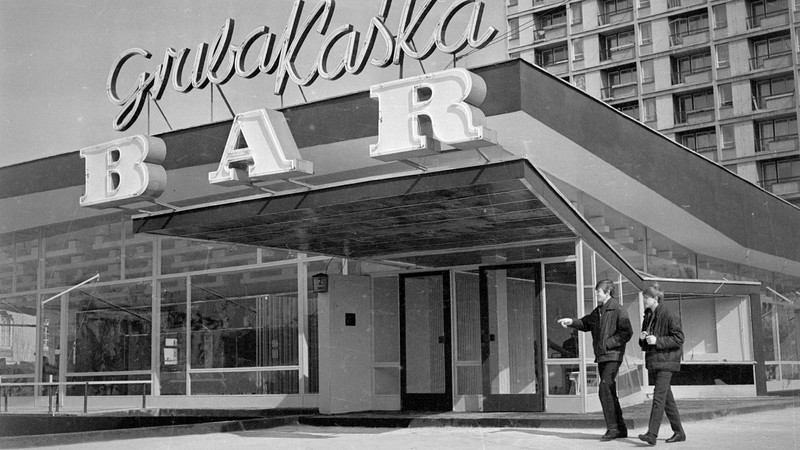
But there were too few of them to dissipate depressing atmosphere, besides they weren`t effective during the day when greyish facades were the most conspicuous. Look
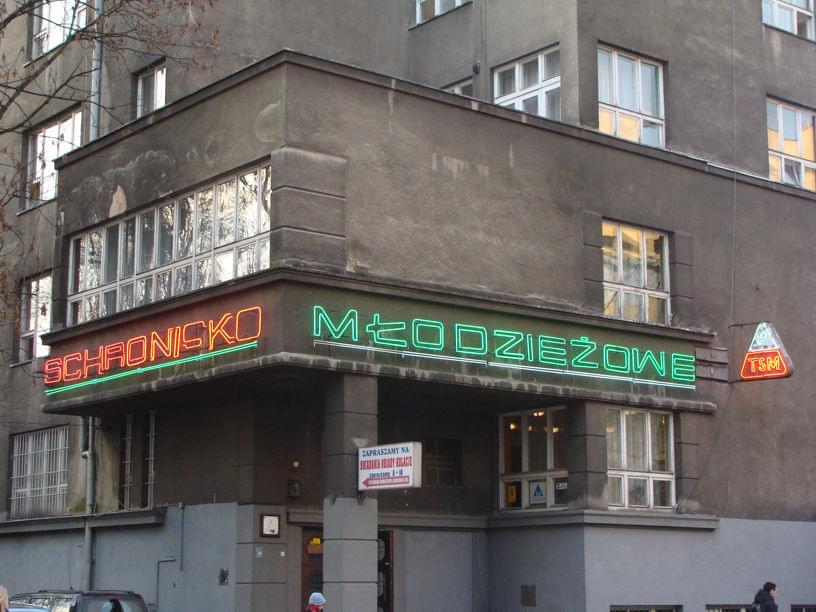
At night it looked better.
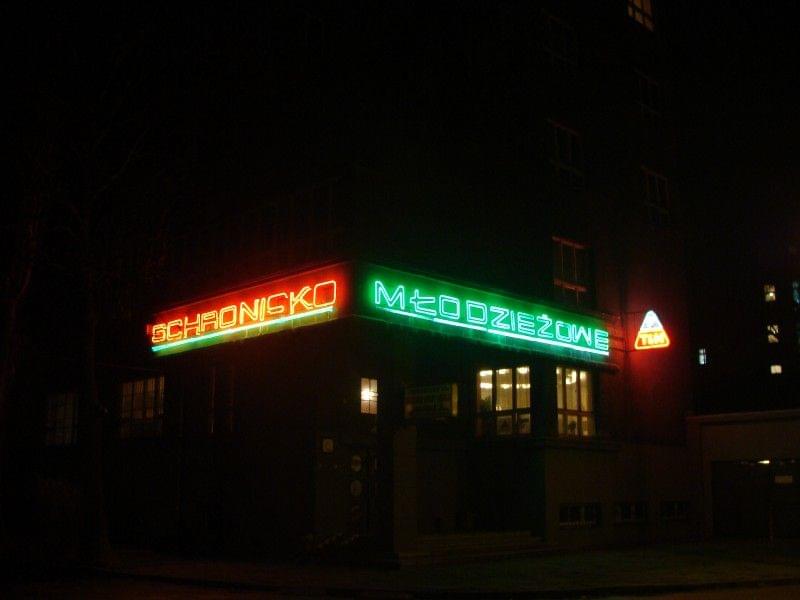
But, on the whole, they played a role and offered some optimism in those gloomy times.




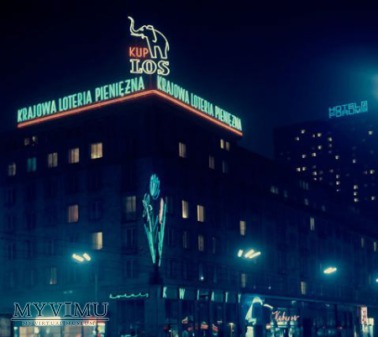
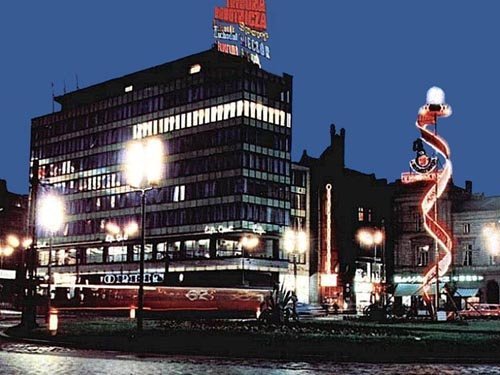


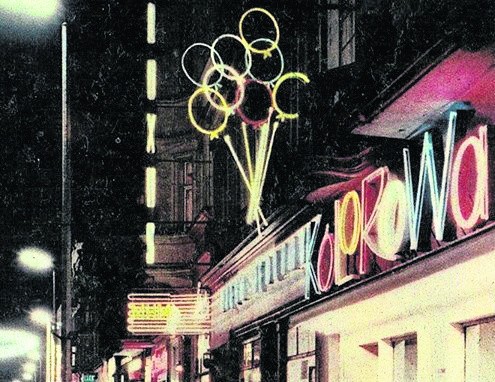





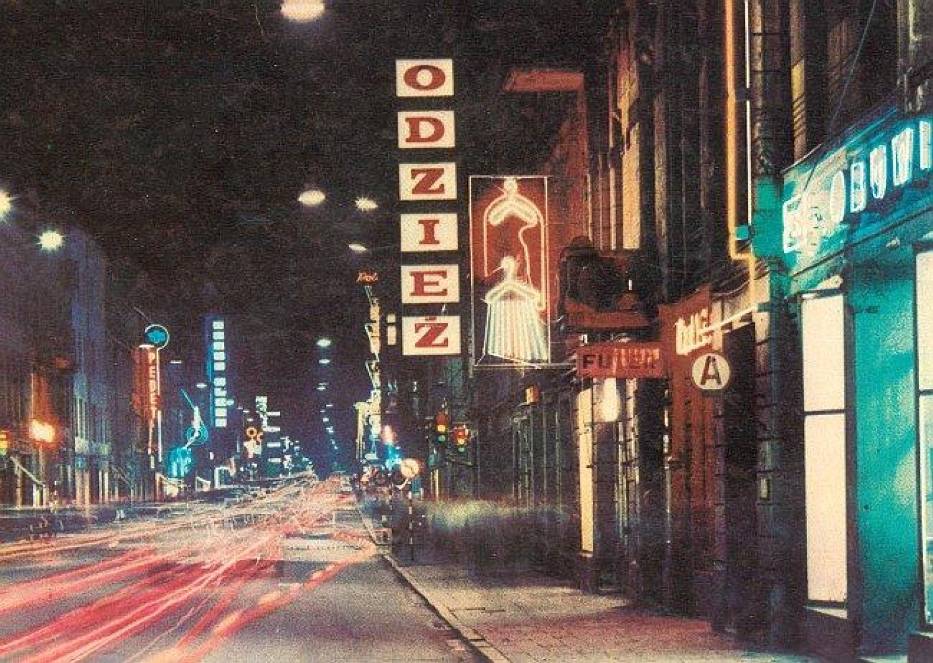



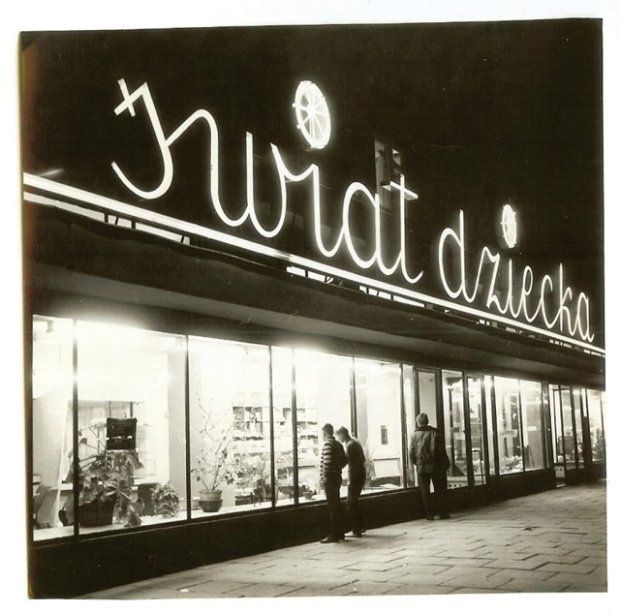
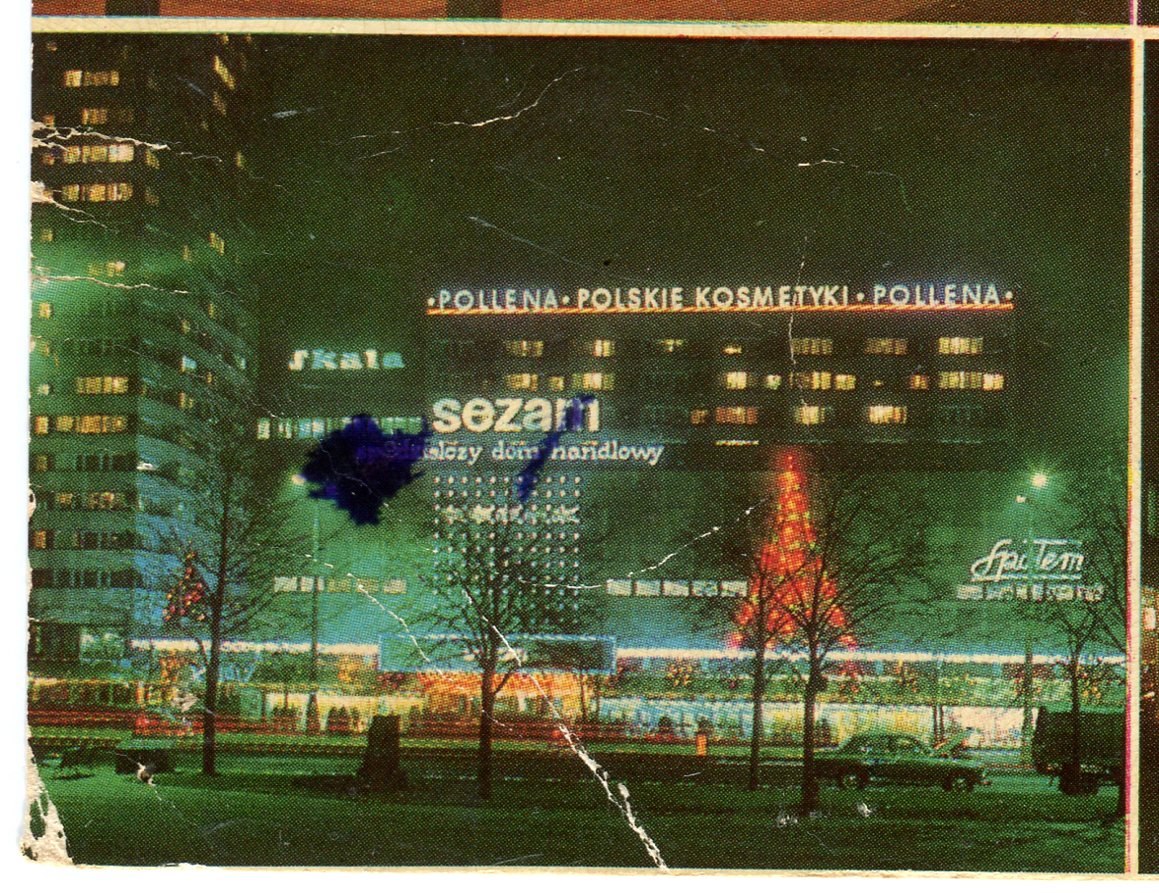
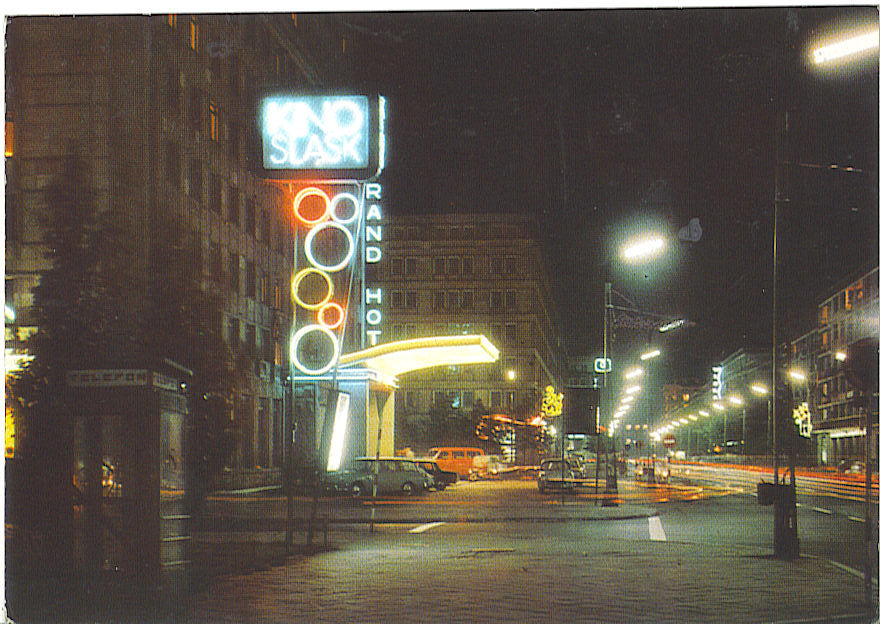

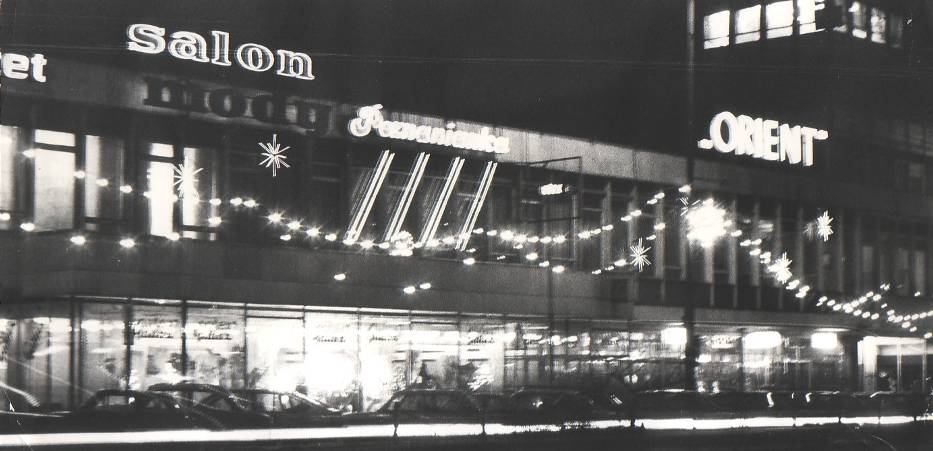






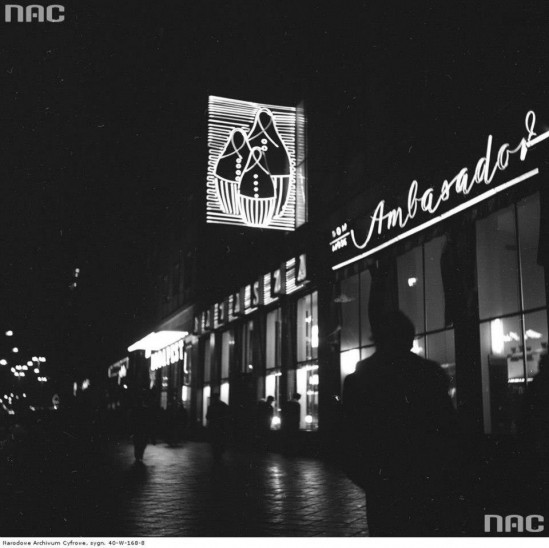
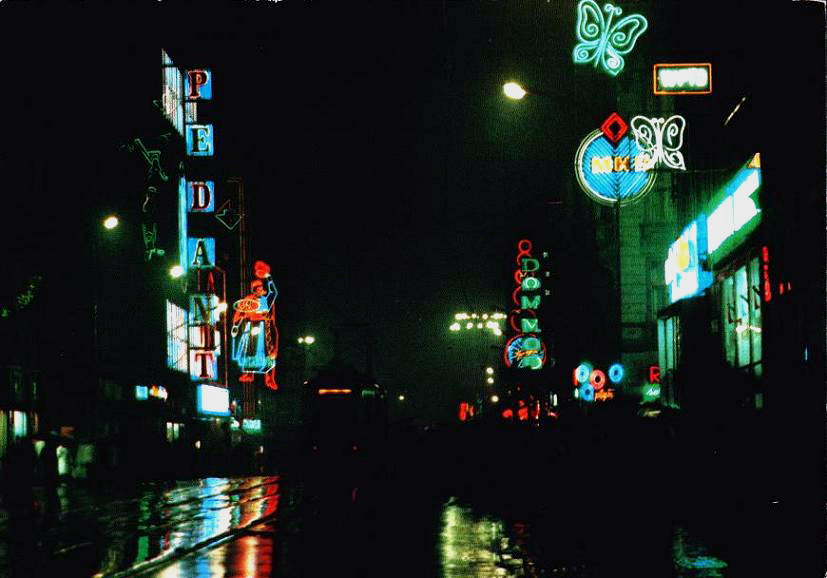

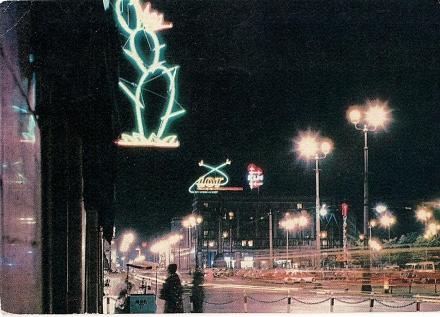

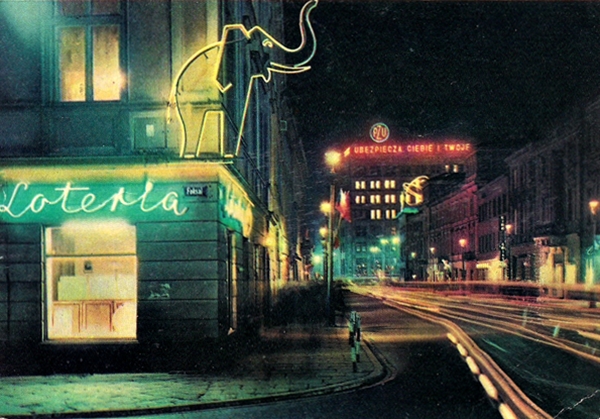
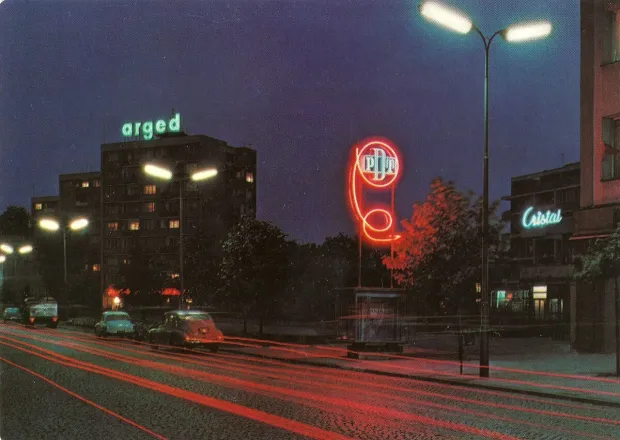
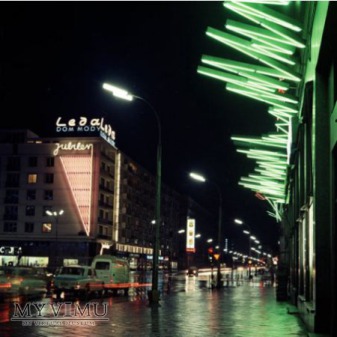
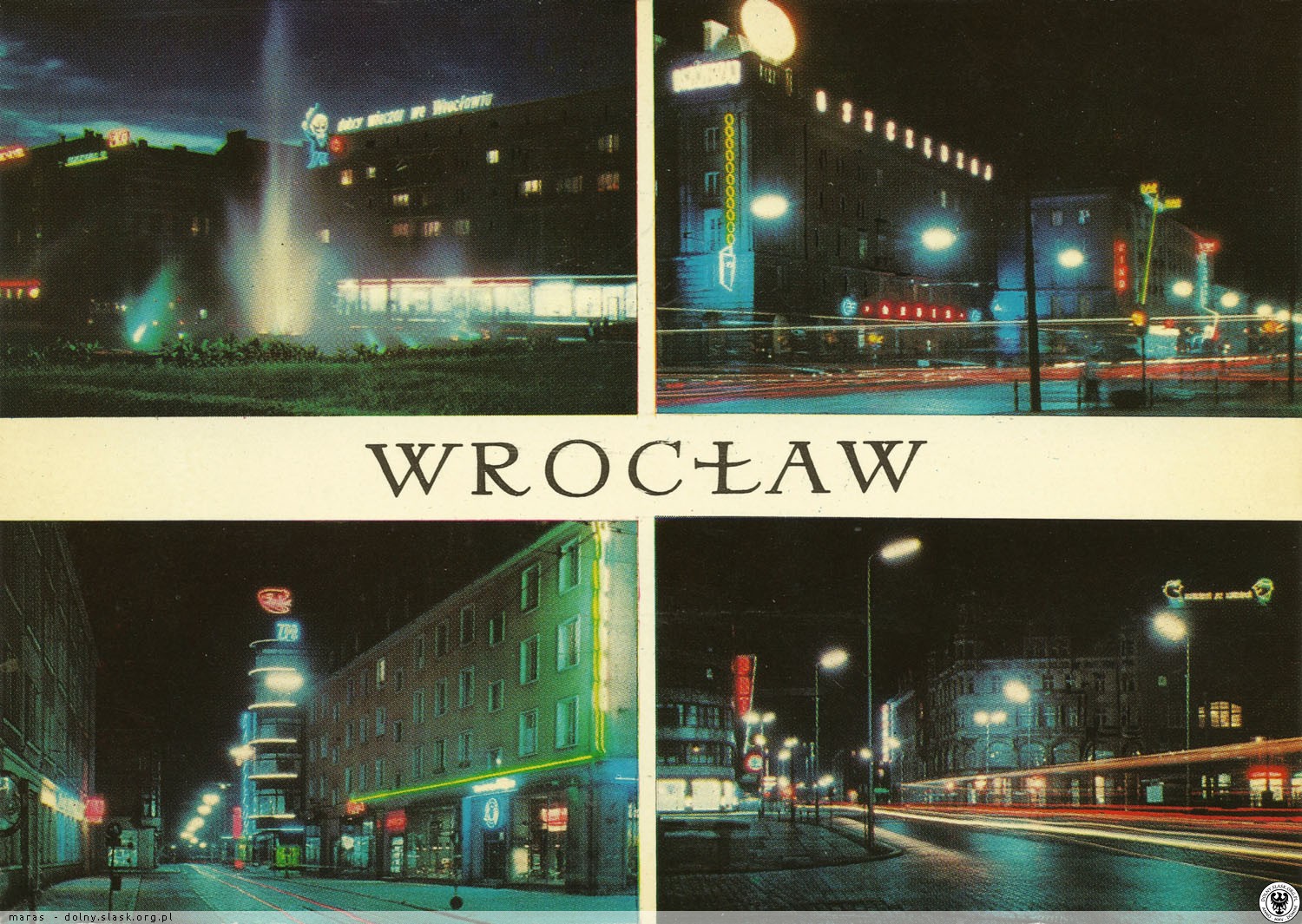
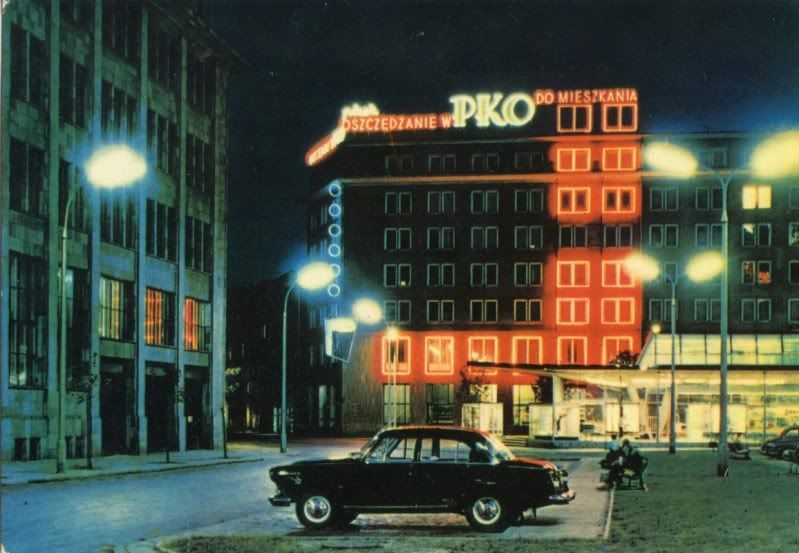
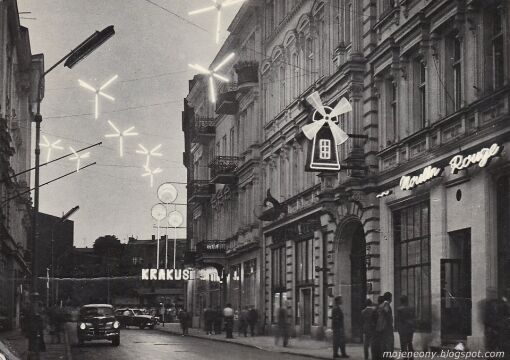

 pl.pinterest.com/teoremat123/warszawa-neony/
pl.pinterest.com/teoremat123/warszawa-neony/Today old neon signs are either pulled down or taken to museums.
www.bbc.com/news/world-europe-21787148
Neon style in Cold War Poland
Colourful and creative neon lights were an antidote to Polish Cold War gloom. From the 1950s onwards, bright lights beamed out across the country. But today, as Poland modernises and as buildings come down, many of those lights are going out.
Photographer Ilona Karwinska has captured the period of Poland's "neonisation" in pictures. But what started as a photographic project for a book, has resulted in the creation of a museum dedicated to these works of art. She told Lila Allen why she is on a mission to save Poland's Cold War neons.
www.theguardian.com/artanddesign/2013/apr/28/neon-signs-cold-war-poland The neon signs shining a light on cold-war Poland
The grey buildings of cold-war Poland were adorned with incongruously bright neon signs. The designs illuminate a moment lost in time
In pictures: Poland's neon signs
Polish cold war neon - zoo, Wroclaw
The neon sign for the zoo in Wroclaw, Poland. Photograph: Ilona Karwinska
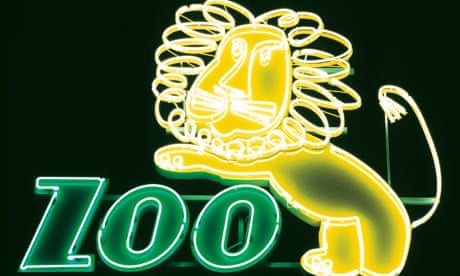
Sunday 28 April 2013 19.30 BST
First published on Sunday 28 April 2013 19.30 BST
I once had a Polish friend who turned down my offer of a limited-edition, orange-flavoured Kit Kat on the grounds that it was "far too communist".
Pressed further, he explained that the only (cheap, low-quality) chocolate available to him as a child had its taste masked by orange flavouring. Hence his concept of western decadence – all that was denied him as a child – was of a magical place where chocolate always tasted of chocolate.
He would no doubt have something equally disparaging to say about these extraordinary images by the fine art photographer and author Ilona Karwinska. A mixture of her own pictures and archival photographs, they capture another attempt by Poland's communist regime to prove that anything the west could do, they could do better.
The neon lights that adorn everything from shopfronts to theatres and cinemas date from the 1950s, when Poland was at an economic standstill and the propaganda of the cold war was at its height. While the motivation behind these incredible designs may have been little more than a cynical attempt to boost the economy by aping the consumerism of western Europe, there is no denying the sheer quality of the work. This unique archive provides a rare window into a moment lost in time, and represents a typographer's dream.
David Crowley of the Royal College of Art raves about how the collection preserves "a unique and significant moment in Poland's history" – one where necessity truly proved the mother of invention. Not that my Polish friend would agree.
[img src="

" alt=" "]
